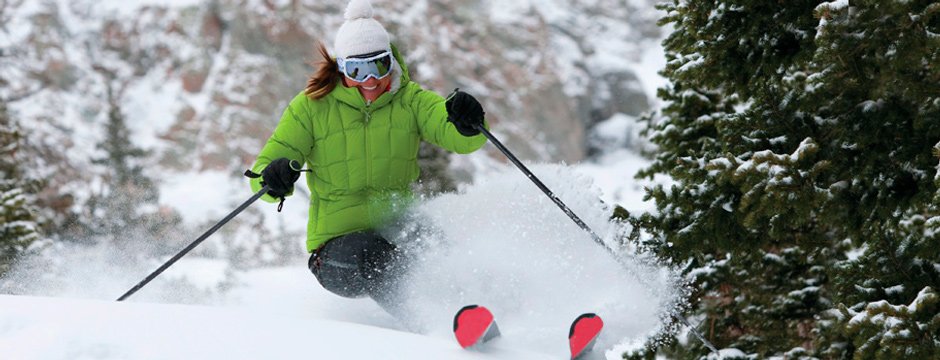How the ski holiday has evolved

The modern world is a busy one, as we constantly attempt to keep on top of technology, trends and social media pressure, our leisure time is precious and we have learnt to spend it wisely. Skiing has always been viewed as both a luxury and extreme sport, therefore is under immense pressure to remain relevant and retain its place as one of the prime winter activities.
Technology

As the technology behind the actual skis have improved, terrain parks are now open to more than just snowboarders and the sport is attracting a younger audience. With the introduction of new shapes and a rocker, with the centre of the ski touching the snow while the tips float across the top, it is easier to turn, carve and control as you race down the pistes. Materials have had an enormous factor to play - skis are now lighter, shorter and more flexible, while boots have got more comfortable, though not enough to cause a snowboarder envy! The question is how does this affect the holiday? With less weight to fight against, skiers are less exhausted at the end of the day. This has seen a rise in après ski and off-mountain activities as well as more novices trying out the harder slopes. With more control, less experienced skiers are not banished to bunny hills, but instead can be seen on the famous resorts once reserved for the expert skier.
Age Demographics

In recent years, the price of skiing has soared, and the family market has struggled to afford it. The most surprising change however has been in the over 50’s group. Though still heavily outweighed by the younger generation, there has been a definite increase of those in later life staying on the slopes. This is due to a multitude of factors, for example, medical advances mean artificial hips and knees no longer hold the older skier back. This coupled with more pliant skis and better-groomed pistes has allowed us to remain active at a much older age. It is also believed that those in the 65 and older category actually ski the most in a given year.
Economy

With a fluctuating economy and unstable currency, most people are opting for self-catered chalets over hotels. If you have picked yourself a Ski Chalet in France ski chalet in France for the season to come you are definitely not alone. Many people are preferring to take lunches up the mountain to avoid resort prices and spend the evening in with the family eating a home-cooked dinner. This has caused a much more competitive market for the resort restaurants, as well as an incredible variety of cuisines available. With the vastness of the internet at your fingertips, lots of people hunt around online for the cheapest lift tickets, ski rentals and lessons. This means more time on the slopes and less in lines.
Health Awareness

Fondue is no longer the staple diet of the ski holiday. Though many may miss the ‘death by cheese’ extravaganza that a trip to the slopes promised, they are out-voted by those with a more holistic approach to health. With a greater awareness of our dietary needs and environmental impact, some of the resort restaurants and carb-heavy lunches are not quite hitting the mark. This has led to an increase in vegan and alternative menus in resorts as well as people opting for self-catered to avoid any complications. There is also a need that has only been recently met by the spas and steams so intrinsic to mountain life - core muscle classes. With a heavy cardio workout on the mountain, many are looking to do more than just marinate off the pistes and are looking for a class to improve core and flexibility ready for the next day’s skiing. Though the world-class spa is still a pre-requisite of many high-end resorts, many now incorporate classes alongside massages.
Helmets and Goggles

Our skis go faster, the pistes are more groomed, weather is unpredictable and ice more likely and there appears to be no soft, slowing, speed-eating powder to be seen. Is it really a surprise more people are wearing helmets? In their defence, helmets have also got lighter and more comfortable as well as more fashionable. With the inclusion of snowboarding in the Olympics and the ever competitive edge of winter sports, the tricks are more dangerous, the jumps are higher and the races faster. More novices appear on the larger slopes and the adrenaline junkies head off-piste to avoid the crowds, making safety paramount and helmets a priority. The need to mount a GoPro on a helmet may have something to do with it, too. Goggles have seen similar popularity, mainly due to anti-fog technology and the completely unfashionable but immensely practical wrap-around sunglasses. There is also the added positive that the most advanced are now able to connect to your social media, map where your friends are, log your speed and altitude as well as a host of other cool features.
Image Credit:C minix ,Q Parks , Quinn Dombrowski, Rubbermaid Products,Wendy Cope , WokandapixWokandapix
